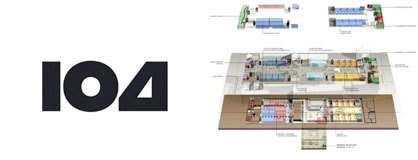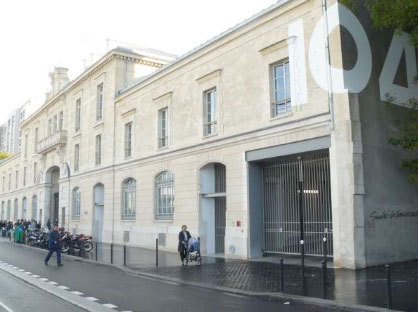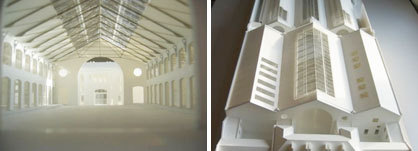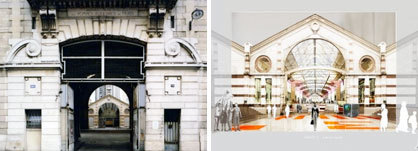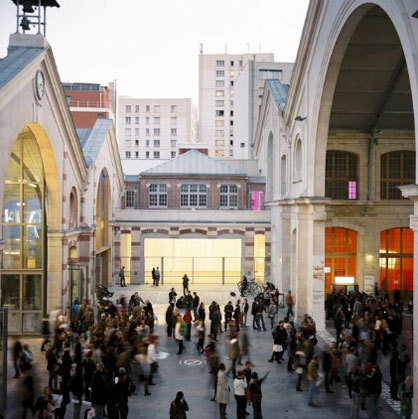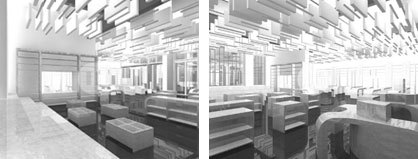104
Scritto da NoéMie Schwaller
Zürich, Svizzera
10.11.08
CENTQUATRE is a place of artistic creation and production. Open to all forms of art, this 39,000 m² (419, 792 sq. feet) space is an original architectural whole in which art meets the public head-on.
CENTQUATRE is a place of artistic creation and production. Open to all forms of art, this 39,000 m² (419, 792 sq. feet) space is an original architectural whole in which art meets the public head-on. The brainchild of two directors, Robert Cantarella and Frédéric Fisbach, aims in particular to highlight the singular artistic languages present at CENTQUATRE, the location for an experience rooted in the everyday.
It is a place where the artistic dynamic pushes back the boundary between art and the public. At CENTQUATRE, therefore, art and culture are open to visitors as well as to passers-by and the onlookers. This powerful movement gives momentum to brand new methods of creation, production and visibility. The reception and working areas in CENTQUATRE, as well as all the programmes, festivals and events are thought out with this artistic dynamic in mind.
The aim of the approach is to increase the number of channels for accessing contemporary creative art and allow unrestricted access to it. Some thirty artistic projects will be developped each year, bringing on the coming of about 200 artists from all over the world, stayin on site at the same time. CENTQUATRE is a place of production and provides artists with the technical, financial and human resources for creating a work as well as for imagining unrestricted production and co-production methods. During their stay, artists will use the various areas provided for them according to their needs. These areas can be adapted according to the artistic orientation chosen and the work stages involved. Each artist is therefore free to explore their flexibility and give them a transient and reversible purpose. Along with the workshop openings, three festivals will be held during the year, showing the finished works of artists staying at CENTQUATRE.
After the Diocese constructed the building in 1873, it was in 1905, following the separation of Church and State, that the SMPF (Municipal Funeral Service) was created as an expression of the progression of Republican ideals. What it means was, every person now had the right to a ceremony, regardless of religion, status (divorced women were previously required to be buried by night) or circumstances of death (suicides were also banned).
The city had a monopoly on coffins, hearses, bearers and cemeteries. An important part of the work was the funeral “ceremony”, and it was therefore compulsory (right up until the 1980s) to place curtains at the entrances to buildings in which dead bodies were laid. The city’s monopoly on funeral services ended with the Sueur Law of 8 January 1993, and the activity at the Rue d’Aubervilliers site declined progressively until the last employee left in 1997.
At the opening the organisers were overwhelmed by the number of visitors – all those who hadn't arrived by early afternoon waited in vain in front of locked and barred doors to get into the free concert given by trip hop avant-garde artist Tricky.
A number of projects at 104 have still to be implemented, including the restaurant and café area, the «House for Children», a place of creativity for kids, a bookshop and a store for original products. The publications on the website are highly promising, however, providing consolation in the meantime and assuring us that the waiting will be worth it, because entry here will be guaranteed to all.
The future Library. Florent Rougemont architecte, cabinet Tomorrow Architects
